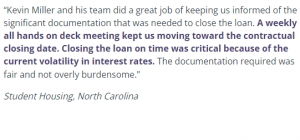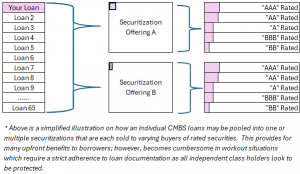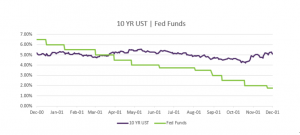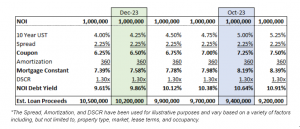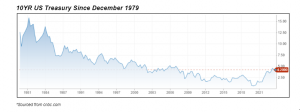Blog
Meet Your Originator: Bruce Neel

Q: What are some of the market trends you are seeing in southeast cities like Columbia and Raleigh/Durham?
Columbia and Raleigh/Durham, like many other southeastern cities, continue to benefit from an affordable cost of living, increasing population, and available workforce. These factors, combined with a pro-business environment, creates a heightened interest for business investment and expansion. Over the past year both South Carolina and North Carolina ranked in the top 10 in population growth nationally, and both states continue to attract strong capital investments with South Carolina announcing $4.1 billion in capital investments in 2018 and North Carolina $3.4 billion. South Carolina has become a national leader in automotive manufacturing with the industry now generating a $27 billion economic impact across the state.
At the local level, commercial real estate statistics for Columbia and Raleigh/Durham reflect markets and economies that are functioning strongly. Absorption is positive and rental rates have been increasing across all commercial property types, and although we are in the later stages of the growth cycle, statistics indicate no current concern with overbuilding. Occupancy rates are increasing and are above long-term averages.
Columbia and Raleigh are both home to state universities, and a common trend they share is a recent increased investment in student housing. Over the past four years over 2,100 student housing units were added to the Columbia market; however, overall multifamily occupancy remains in the 93% to 94% range. In the Raleigh/Durham market student housing occupancy is reported to be above 95% with 5% annual rent growth. Clearly there was pent up demand within this sector.
A statistic that is unique to Raleigh has to do with growth within the office sector. Being located within The Research Triangle of North Carolina, one naturally expects the area to be attractive to office users. In 2018 Raleigh ranked in the 99th percentile in terms of office rent growth compared to other secondary market MSAs (MSAs with a population of between 250,000 and 1,000,000).
Q: Given your extensive experience both living and serving the greater Southeast CRE community, how has the market adapted to recent growth?
A growing population and increased capital expansion can strain local infrastructure, and increased demand for products creates a higher need for effective logistics. Five years ago, the South Carolina Ports Authority developed an inland port in upstate South Carolina which provides direct rail delivery to the port in Charleston, and this facility recently announced a $25 million expansion. This provides an efficient way to deliver goods without an additional strain on the local road infrastructure.
On the private investment side, real estate developers have responded by building larger and more modernized industrial facilities that can onboard and distribute products more efficiently and are located closer to local and regional supply chains.
These are two good examples of how the market is adapting to recent growth, one from the public sector and one from the private sector.
Bruce has 25 years of commercial real estate experience. For 10 years he was a commercial real estate lender with Wachovia Bank’s Real Estate Financial Services Group where he underwrote and closed construction and permanent loans to developers and owners in the Southeast. Additionally, for 15 years Bruce has owned and managed his own commercial real estate investment, development and brokerage companies where he was involved in the development, acquisition, sale, leasing and management of multi-family, retail, office and industrial projects. He has held his broker-in-charge real estate license since 2003.
Southeast Originator | bruce.neel@plumlending.com | (803) 567 - 3134
Related
A quick, smooth loan closing begins before you reach out to a lender. It’s made possible by understanding the type of documentation lenders look for, and when, and in which format, they need to receive it. The type of property being financed will influence key documents; however, the following are items that are consistent across…
Read More >>CMBS loans have become popular in 2024 as regional and local banks have slowed or halted new loan production. For those that aren’t as familiar with the CMBS product, the loans are heavily structured and largely originated by lenders with little to no customer relationship. The loans are quickly sliced, diced, pooled and converted into…
Read More >>While the Fed is an important driver in the economy, it isn’t the only factor that shapes long-term interest rates for commercial real estate. We saw interest rates move independently of the Fed’s actions in the year 2000. At that time, the Fed had abandoned their two year fight against inflation and turned on its…
Read More >>Santa came early for some commercial real estate owners who locked a rate in the past week. The 10YR US Treasury yields dipped then rallied last week, declining to 4.11% before bouncing back to current levels near 4.25%. Is this dip and then increase back to the prior week’s levels a sign of a…
Read More >>CRE Owners Catch a Break This past week, commercial real estate owners caught a huge break. The 10YR treasury yields fell almost 0.30% throughout the week, and are 0.80% lower than their high of ~5.00% in mid October. Not even Friday’s comments by Fed Chair Powell that “rate cuts are premature” stopped yields from…
Read More >>COMPANY
© 2019 PLUM Lending. All Rights Reserved. | Terms of Service | Privacy | Plum, Inc. dba Plum and/or Plum Lending

